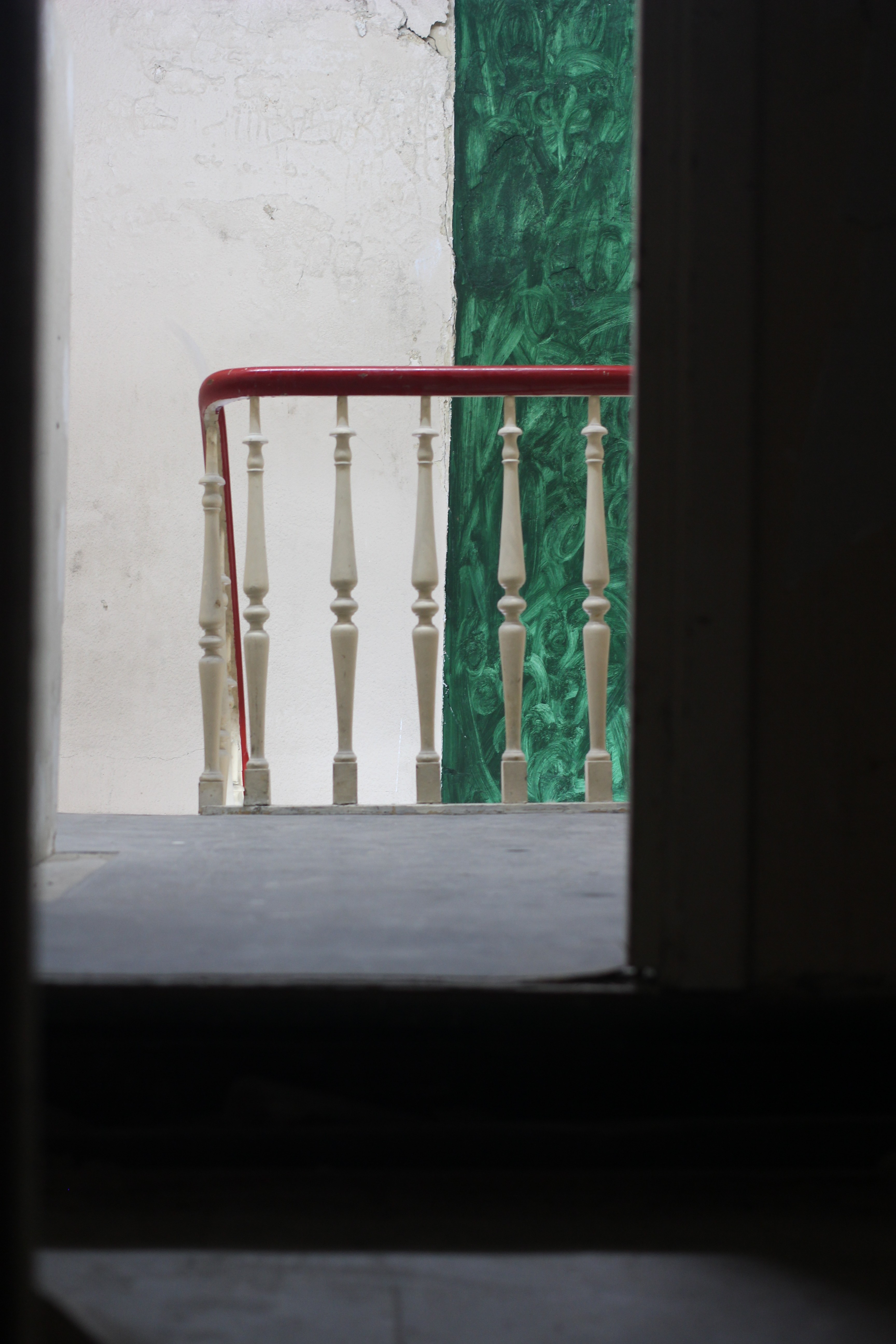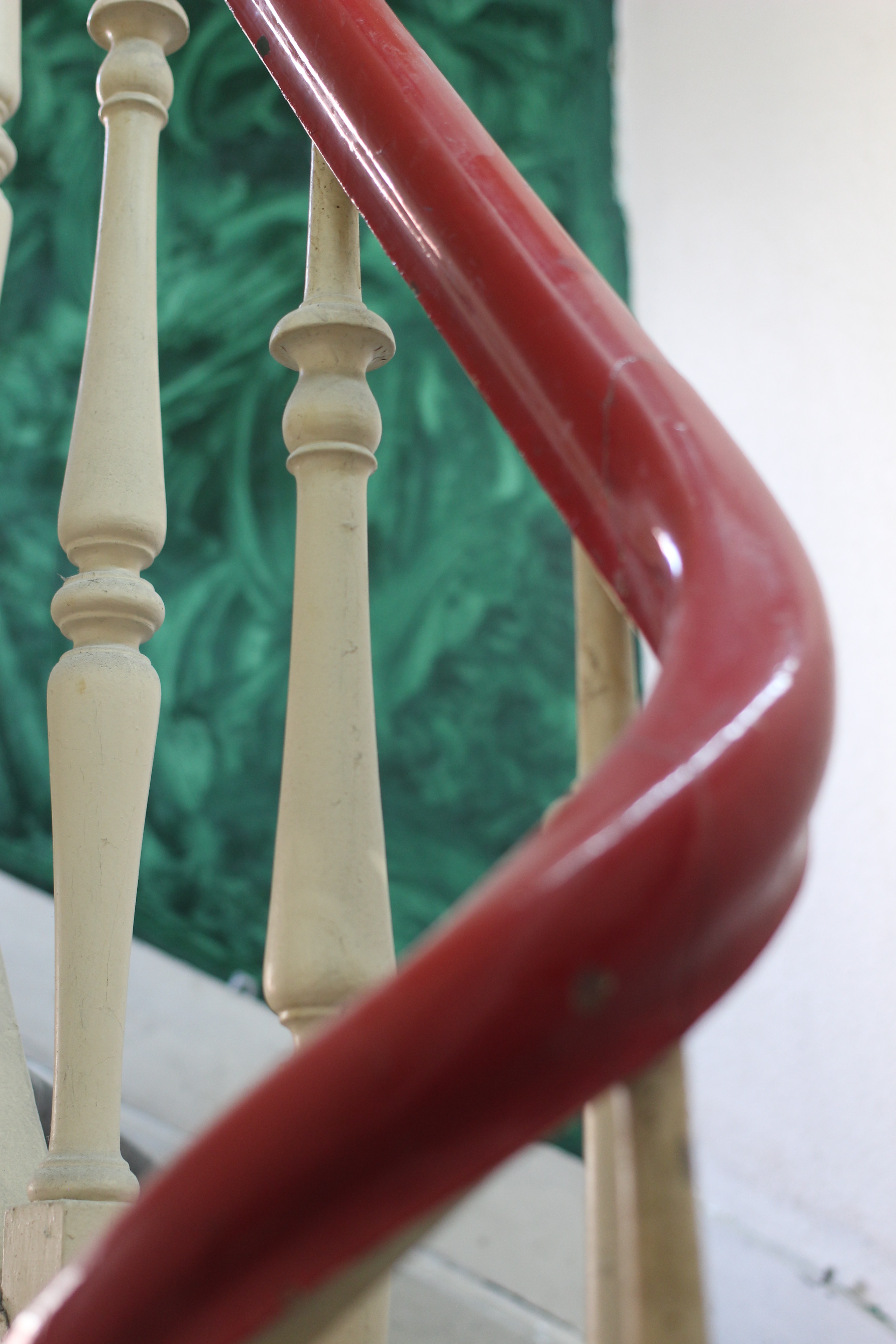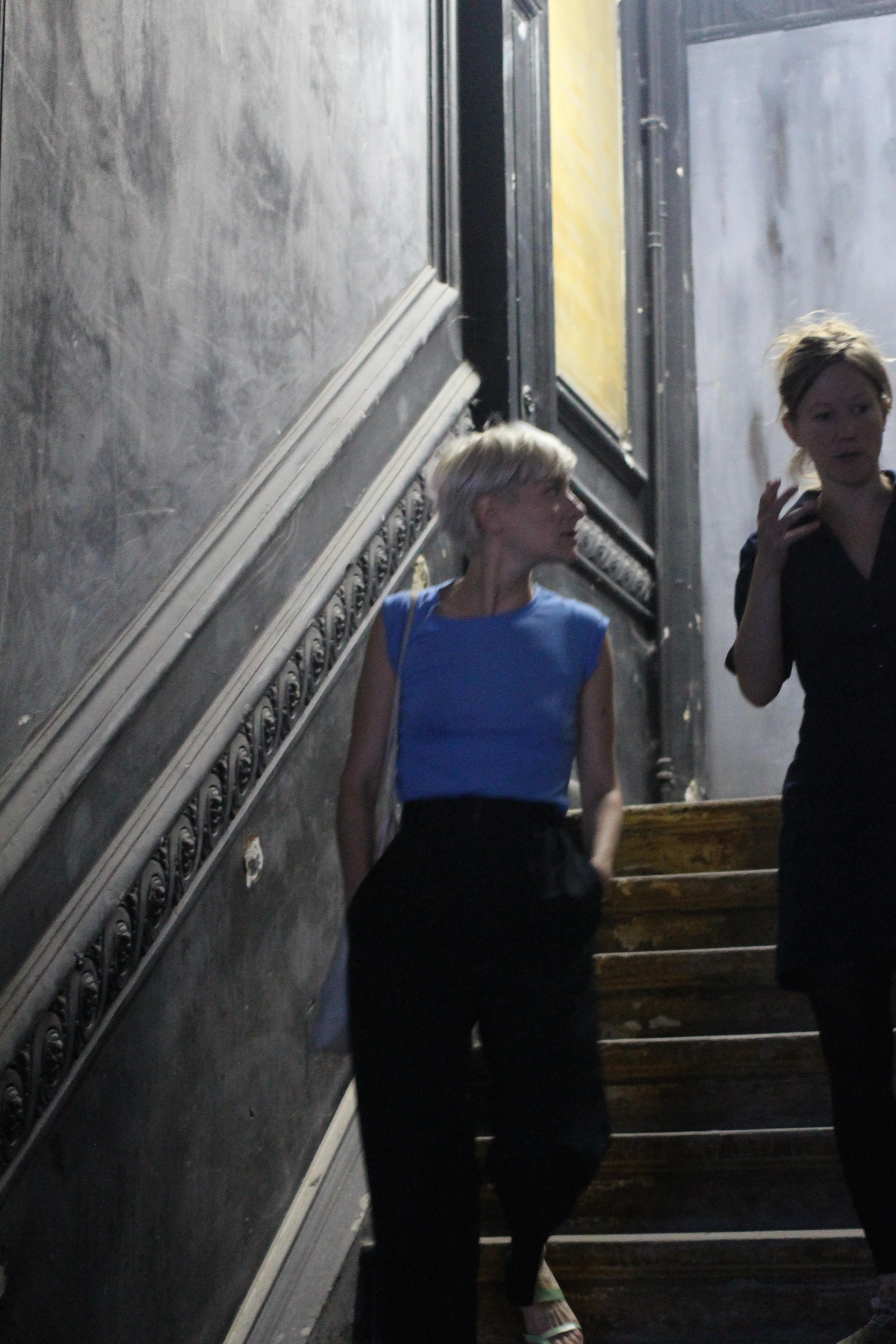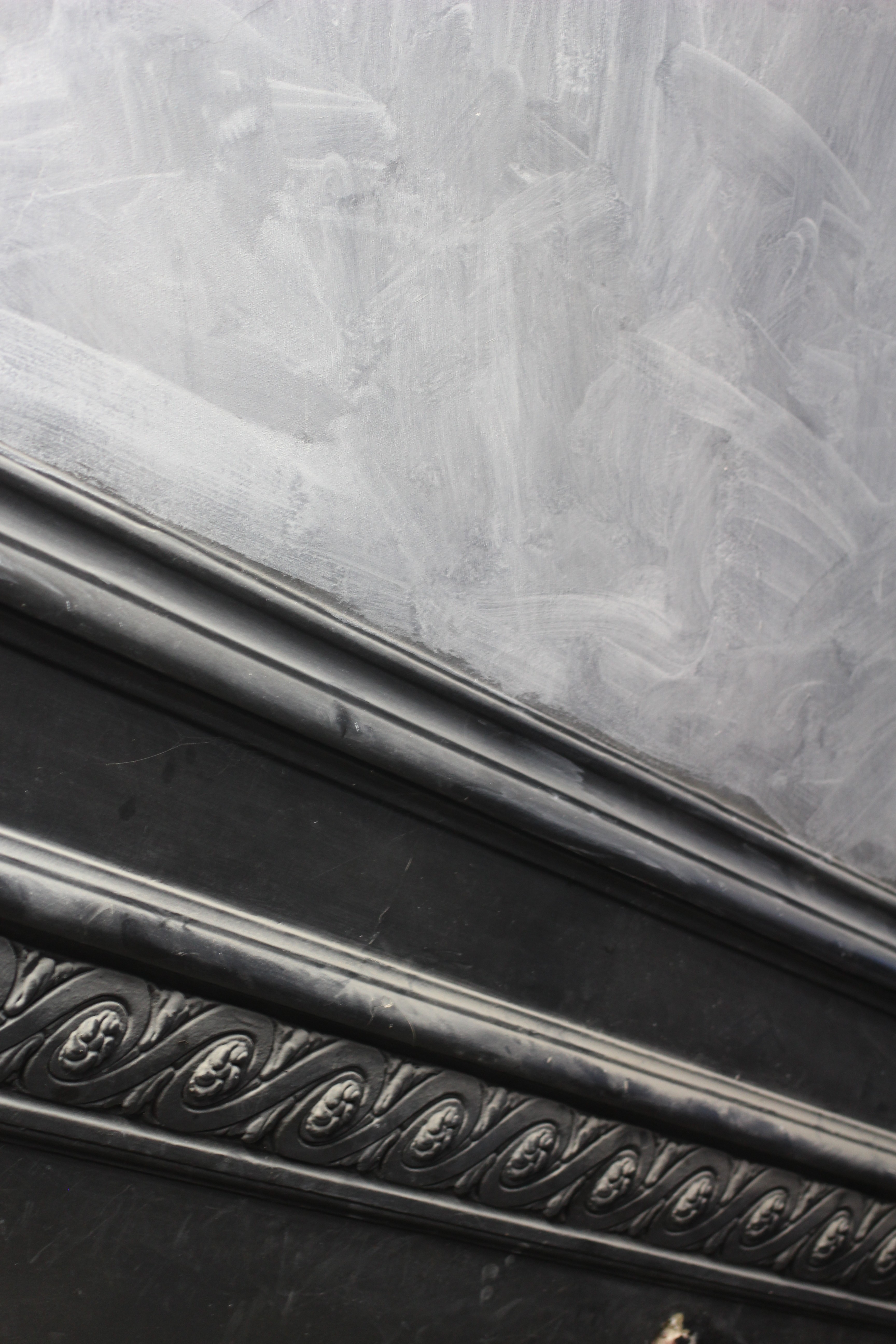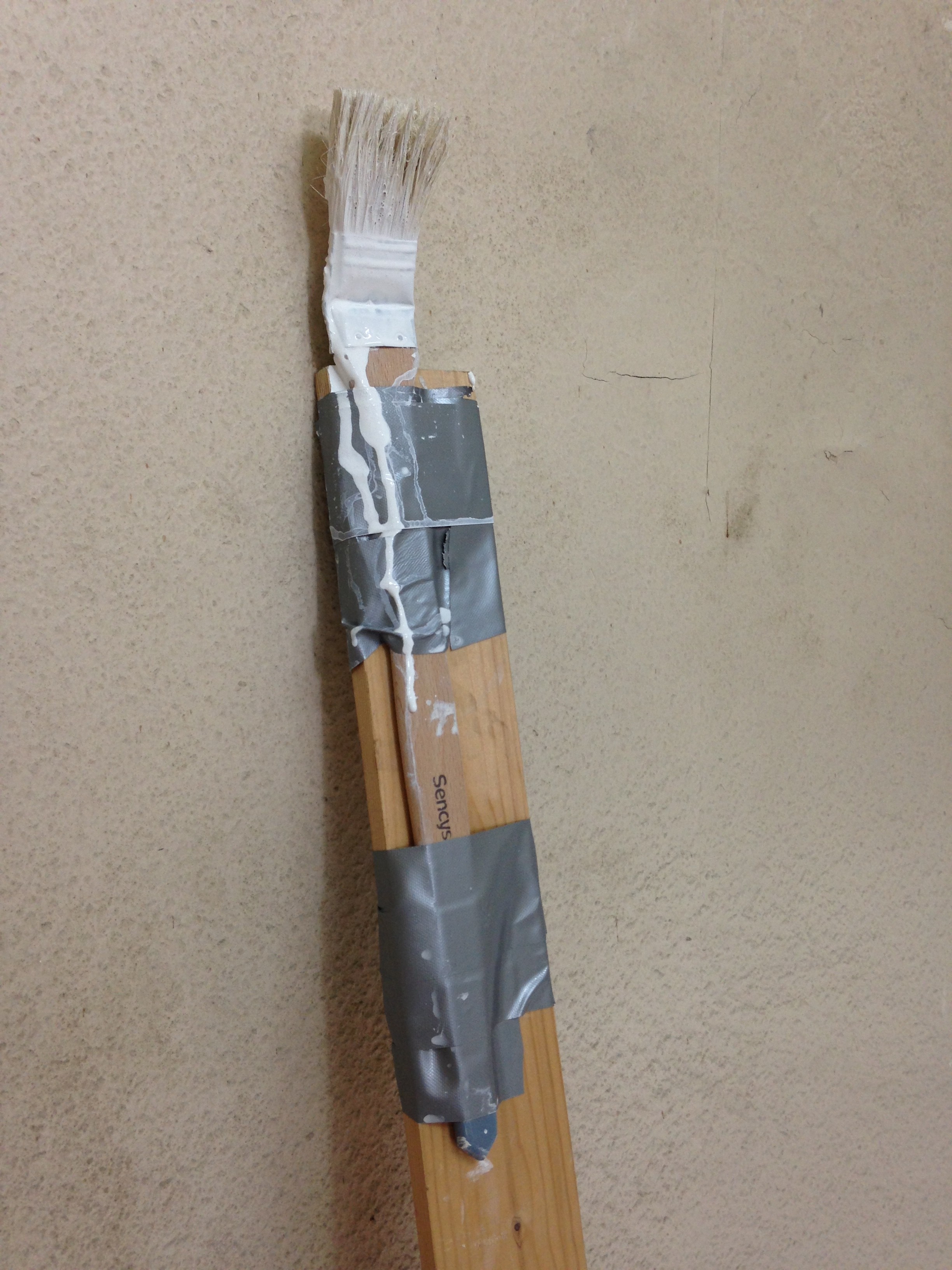Describing an art practice is tricky, even as part of the most casual conversation. However, driving around the back streets of Brussels whilst listening to a blend of French Chanson, 90s Hits and Bulgarian Pop Music (taken from the driver’s personal music collection) is perhaps the most unique circumstance in which I’ve ever been asked to describe my work.
I had arrived in Brussels three weeks earlier, ready to begin a three-month internship at a gallery based in the city. With Art Brussels approaching I was loaned out to another gallery to help with their booth. This is where I met David Zagari and en route to Art Brussels he explained about La Dent Creuse, the residency that he and a friend were organising.
Two weeks later I met with David and project co-founder Maud Soudain. ‘La Dent Creuse’ (the literal translation ‘Hollow Tooth’) is a phrase often used within Urban Planning and refers to a vacant or undeveloped plot of land surrounded by buildings on each side. David and Maud explained that they wished to create a framework for a residency programme that could be staged several times, occupying a new vacant building or area that was in a temporary ‘in-between’ state. For example: a building between leases, or — as in the case of their first building — a former restaurant waiting to be developed into a hotel. Using the residency as a platform they wished to, ‘enable artists to establish links between territory and artistic practice, inviting practitioners to create from a given place, as well as hosting artist collectives to further support their artistic approach.’
The next step was a site visit. This was an opportunity to let the invited ‘residents’ discover the building and begin the dialogue between all of the artists, as well as with David and Maud, about who would occupy which spaces for the duration of the residency. The building was huge and upon speaking to friends in Brussels, one exclaimed ‘Oh that’s what we call ‘Une Maison de Maître’, it’s typical of Brussels and they’re everywhere in the city!’
I spent the time taking photographs, walking between the five floors from basement to attic, and smiling politely to the other artists who I didn’t yet know. It’s difficult to accurately describe the atmosphere of the visit, to say it was tense would be incorrect, but equally to say that it was relaxed would not be right either. As each of us made our way around the building there was a growing feeling for the need to discover the ‘special something’ that immediately stood out as inspiring. There was also a silent understanding that once this ‘inspiration’ or ‘idea’ had been found, it was extremely important to somehow claim the space as your own.
What became immediately apparent to me was that it was going to be difficult to choose a space to work in. How could I choose just one area when the entire building contained so many unique spaces? The building was full of original features, room after room complete with enormous high ceilings and ornate cornicing. There were detailed 8ft mirrors and moldings covered with anything from one to five layers of paint; the history of the building described through each coat.
I decided my starting point would be wallpaper. There were different types throughout the building, again covered in varying thicknesses of paint and my idea was to develop an existing body of work in relation to the building. Based upon the gestural marks often found covering empty shop windows, the Whitewash Studies feature colourful gestural paint marks and are part of a body of work examining what I call ‘Everyday Painting’.
I felt that there might be room to develop an interesting dialogue with these works and a building in a temporary state of vacancy. My intention was to paint new gestural marks on lining paper and then attach the wallpaper directly to the walls, like this I could create the effect I wanted with the paint and then fix the work in place. And so, when the residency began, I arrived complete with a roll of BRICO’s* best lining paper, found a space at the top of the building and set about painting.
Three days into the residency and there seemed to be a shift in my ideas. Fearful of running out of time due to my commitments at the gallery, I had felt the need to immediately begin making work as soon as the residency had started.
After a few days of this kind of frantic production I began to realise that I might be missing the point of the residency and the opportunity to try out some different approaches. So I stopped painting. I began to walk around the building again, this time pausing to sit and look.
As each day passed the progress of the other artists became harder to ignore. Large structures were being built and the vibrations of a pneumatic drill being used in the basement, sought only to support the idea that progress was to be achieved through physical productivity.
In spite of this growing pressure I continued to walk around the building; sure now that I wanted to make work that truly reflected my experiences of being there.
I found several areas in the building, forgotten or a little neglected, that had been ignored as the other artists settled into a routine to complete their work. Three of these areas began to emerge as the locations for the paintings I was to make.
I wanted to highlight these areas through the use of paint, exploring the different ways in which it could be applied. The intention was to draw just enough attention to the unique space or architectural feature that I was asking viewers to look at without the painting taking over. Pasting wallpaper to the walls now seemed such an insensitive thing to do. I spent the next few days preparing the walls and surfaces ready to begin painting again.
Two days later, the works were complete.
*Belgium’s answer to B&Q
Read more about La Dent Creuse and Edward Liddle.
